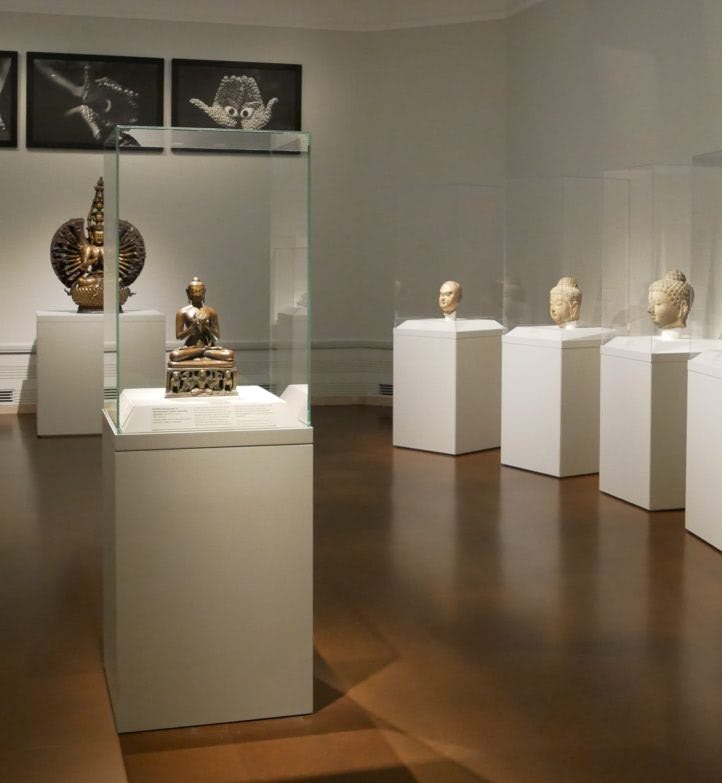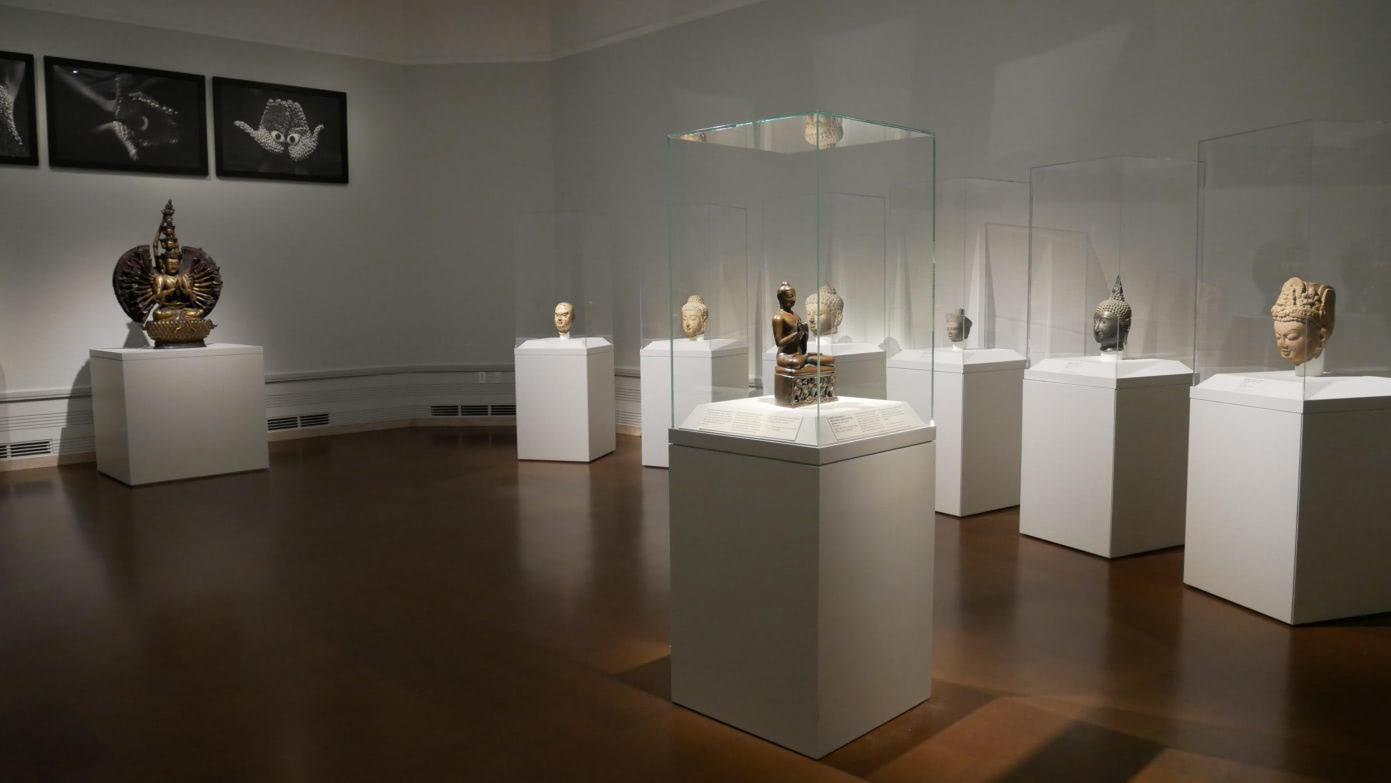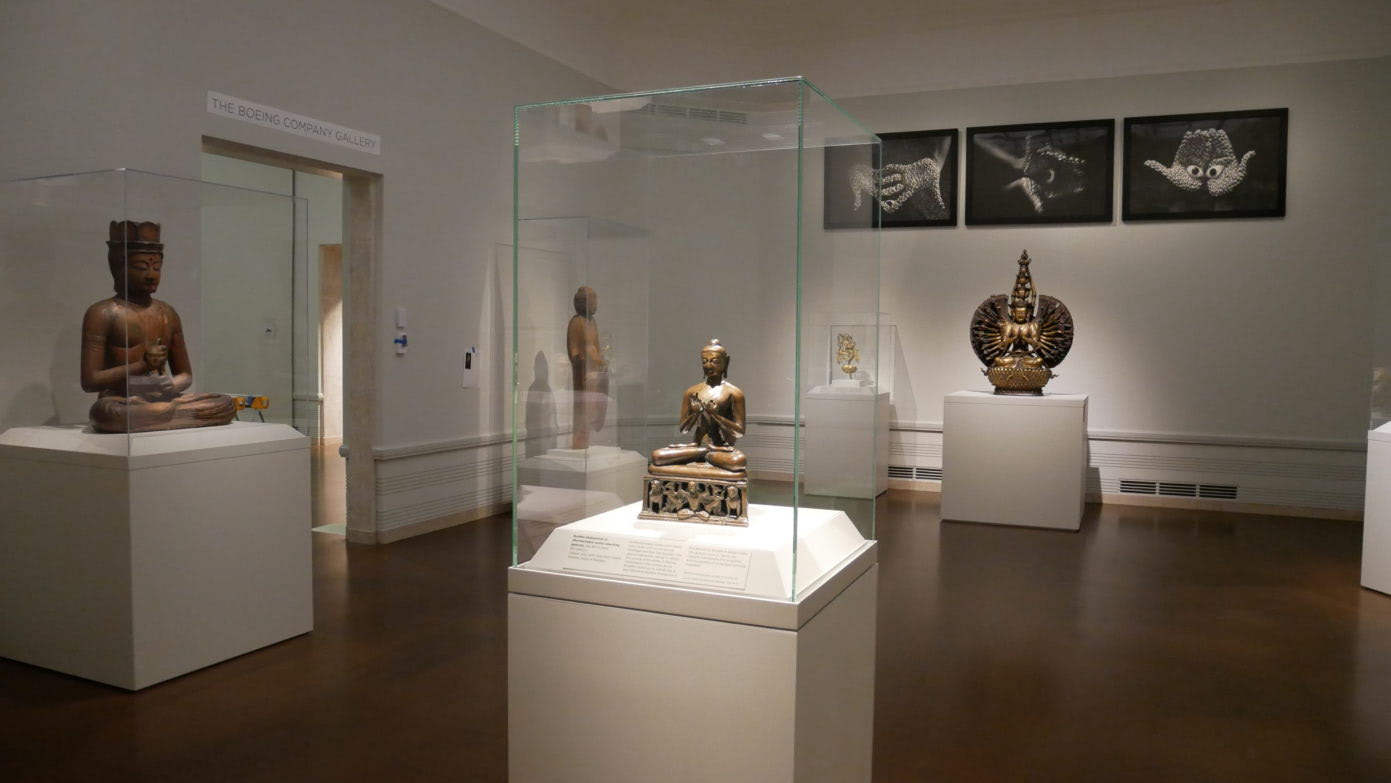The Challenge
To control the environment in which the sculpture is stored and displayed while providing an optimal viewing experience.
The Solution
Construction of a low-oxygen, low-humidity case made with UltraVue® Laminated Glass.
Sealed display enclosure
The 5-sided 8.8mm UltraVue Laminated Glass vitrine, rather than acrylic, was necessary to offer optimal protection while minimizing the rate of air exchange.
Anti-reflective
Cuts light reflections down to 1% compared to 8% with standard glass, allowing viewers to see the sculpture without distracting reflections.
Safety & Security
If glass breaks, shards remain in place to safeguard against injury and damage until the glass is replaced. This product is ideal for valuable works, high traffic areas, and public event spaces.
The Work
The Shakyamuni is a rare, surviving example of brass produced from the earliest actual smelting of zinc, achieved by Kashmiris approximately 1,000 years before Western Europe.
Cast in the late 8th to early 9th century in Kashmir, Buddha Shakyamuni is seated in the dharmachakra mudra, a gesture that signifies the sharing of spiritual teachings. The sculpture is one of only a few examples known in Western collections. It is featured in the inaugural exhibition Boundless: Stories of Asian Art – a thematic, rather than geographic or chronological exploration of art from the Asian continent – celebrating the historic renovation of the museum’s 1933 Art Deco building located in Seattle’s Olmsted-designed Volunteer Park.


